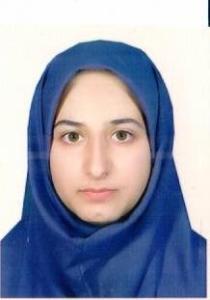Green reverse supply chain with considering to quality and discount strategy for the secondary market - دانشکده فنی و مهندسی
Green reverse supply chain with considering to quality and discount strategy for the secondary market

نوع: Type: thesis
مقطع: Segment: masters
عنوان: Title: Green reverse supply chain with considering to quality and discount strategy for the secondary market
ارائه دهنده: Provider: Mahshad Teymoori
اساتید راهنما: Supervisors: Dr. Parvaneh Samouei
اساتید مشاور: Advisory Professors:
اساتید ممتحن یا داور: Examining professors or referees: Associate Professor. Javad Behnamian - Assistant Professor. Nafiseh Soleimani
زمان و تاریخ ارائه: Time and date of presentation: 07/11/2022
مکان ارائه: Place of presentation: Faculty of Engineering
چکیده: Abstract: Companies that combine reduce, reuse, recycle and disposal with managing costs in the supply chain, are developing reverse supply chains that help the Earth and the customer. The path to a greener supply chain is often paved with focused on environmentally friendly manufacturing, transportation, and distribution processes. For some companies, however, the key to jump-starting supply chain sustainability can be found in reverse. By embracing reverse logistics strategies including returns management; product repair and refurbishment; recycling of goods and materials; and proper disposal of materials from unwanted goods, companies can move cutting costs and reaping products with a longer shelf life. And, by working to cut out unnecessary transportation moves, reverse logistics proponents can reduce carbon emissions and improve air quality. Manufacturers face challenges while collecting used products in their reverse supply chain from several scattered geographic regions. These regions are different in terms of quality of used products returned, quantity returned, the timing of the returns, and regions distance from the central remanufacturing facility. Toward of the implementation of Carbon cap-and-trade policy by the environmental policymakers in Europe and experiments in China and its potential influence on the supply chain, The European Union Emissions Trading Scheme (EU-ETS), launched in 2005 is the largest international scheme for the trading of greenhouse gas emissions allowances, it follows the basic mechanism of cap-and-trading policy and the manufacturer needs to buy carbon credit from a carbon trading market on exceeding permissible carbon emission cap. However, the manufacturer is allowed to sell carbon credit in the market when they emit carbon less than the carbon cap. In this research, the design of green reverse supply chain has been designed with considering after sale service to increase customer satisfaction. In this research can provide benefits from the proper disposal of waste materials, including toxic and hazardous goods, encourage recycling, and reuse raw materials to produce less waste. As a result, the relevant operational costs are greatly reduced, while the efficiency of using resources improves. Consumers enjoy shopping and using products from companies that have a low risk on the environment and to their health, too. Supply chains need to focus on their main expertise and outsource some basic activities to be able to dominate the competitive market in which causes to significant reduce in manufacturing costs. In order to support supplier selection and supplier evaluation and management, in this research, fuzzy Vicor method with combining SCORs model have been considered. Morever, introducing of new product has been considered in this supply chain. New products are introducing in secondary market via marketing and quantitative discount for consumers. The mentioned discounts have been considered for competitive advantage and increasing customer satisfaction. Uncertainty of three parameters related to the secondary market, including demand, marketing cost and unit selling price has been considered and two scenarios of bear and bull markets and a two-stage scenario-based stochastic programming method has been used to deal with this uncertainty. To evaluate the model, a small numerical example was solved with GAMS software and CPLEX solver in deterministic and indeterministic states, and sensitivity analysis was performed on the main parameters of the problem. Shuffled frog leaping algorithm and genetic algorithm have been used to solve the problem in a large size using MATLAB software. Taguchi method has been used to adjust the parameters and the results of the two algorithms have been evaluated. The results of two algorithms are evaluated by Kruskal-Wallis test. Two algorithms are not significantly different in terms of mean and computational time
فایل: ّFile: Download فایل
